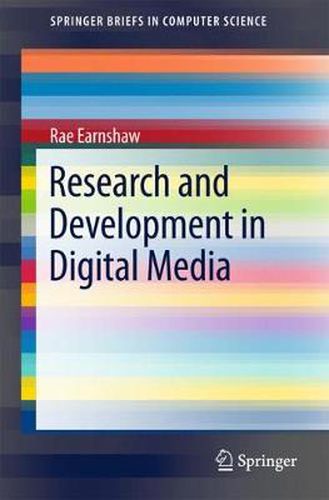Readings Newsletter
Become a Readings Member to make your shopping experience even easier.
Sign in or sign up for free!
You’re not far away from qualifying for FREE standard shipping within Australia
You’ve qualified for FREE standard shipping within Australia
The cart is loading…






This title is printed to order. This book may have been self-published. If so, we cannot guarantee the quality of the content. In the main most books will have gone through the editing process however some may not. We therefore suggest that you be aware of this before ordering this book. If in doubt check either the author or publisher’s details as we are unable to accept any returns unless they are faulty. Please contact us if you have any questions.
This book presents an overview of the technical underpinnings in the field of digital media. This includes theory, imaging, big data, interaction, and the research and development that is needed in order to make digital media interfaces more natural and easy to use. Grant funding sources for R & D are detailed and current priority areas are summarized. Developments in the relevant commercial areas are also reviewed.
This is Professor Earnshaw’s fifth book in the series on digital media and its applications and creative uses. These books explain the significance and importance of digital media and how it has developed and advanced.They also explore the impact digital media is having on a range of domains including art and design, the creative industries, visual analytics, big data, and digital humanities.The convergence of IT, telecommunications and media is bringing about a revolution in the way information is being collected, stored, accessed and distributed. Digital media is expected to play an increasing role in these processes. State of the art digital technologies are increasingly utilized in order to deliver to the user requirements and also to be effective and efficient in this delivery, given the increasing demands by users and other third parties involved in the content creation and service delivery pipeline.
Research and Development in Digital Media will be invaluable for readers that want a summary of the technical research and development aspects of digital media, how such work is being funded, and the kind of changes in digital media provision that may result.
$9.00 standard shipping within Australia
FREE standard shipping within Australia for orders over $100.00
Express & International shipping calculated at checkout
This title is printed to order. This book may have been self-published. If so, we cannot guarantee the quality of the content. In the main most books will have gone through the editing process however some may not. We therefore suggest that you be aware of this before ordering this book. If in doubt check either the author or publisher’s details as we are unable to accept any returns unless they are faulty. Please contact us if you have any questions.
This book presents an overview of the technical underpinnings in the field of digital media. This includes theory, imaging, big data, interaction, and the research and development that is needed in order to make digital media interfaces more natural and easy to use. Grant funding sources for R & D are detailed and current priority areas are summarized. Developments in the relevant commercial areas are also reviewed.
This is Professor Earnshaw’s fifth book in the series on digital media and its applications and creative uses. These books explain the significance and importance of digital media and how it has developed and advanced.They also explore the impact digital media is having on a range of domains including art and design, the creative industries, visual analytics, big data, and digital humanities.The convergence of IT, telecommunications and media is bringing about a revolution in the way information is being collected, stored, accessed and distributed. Digital media is expected to play an increasing role in these processes. State of the art digital technologies are increasingly utilized in order to deliver to the user requirements and also to be effective and efficient in this delivery, given the increasing demands by users and other third parties involved in the content creation and service delivery pipeline.
Research and Development in Digital Media will be invaluable for readers that want a summary of the technical research and development aspects of digital media, how such work is being funded, and the kind of changes in digital media provision that may result.